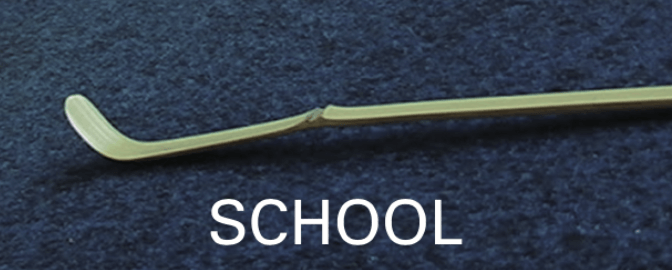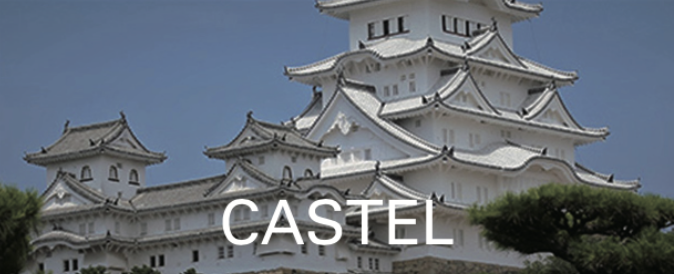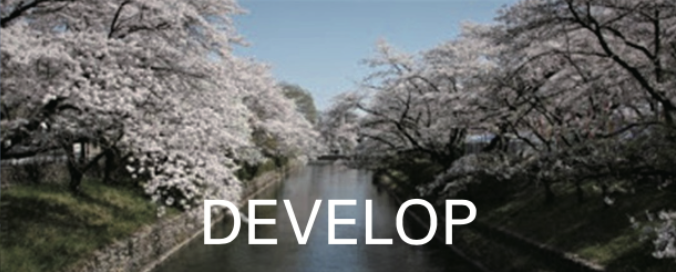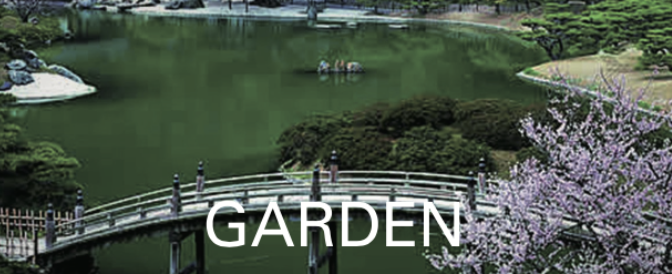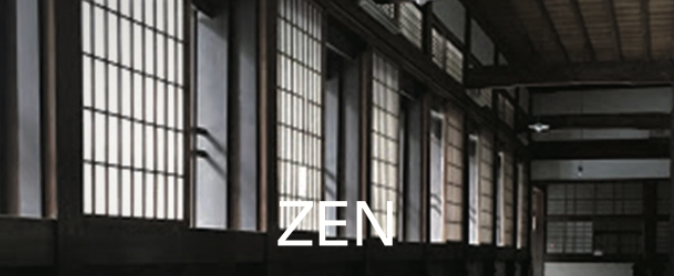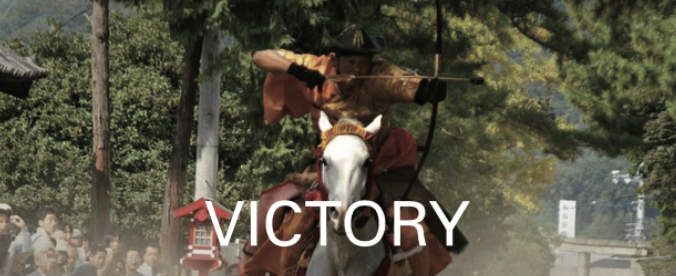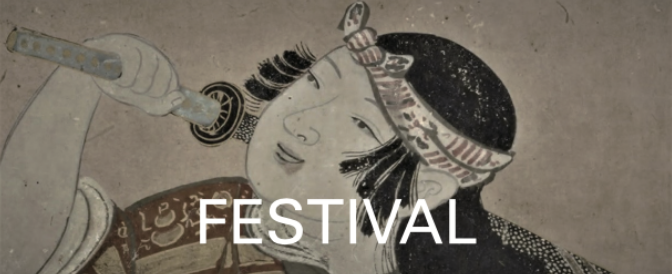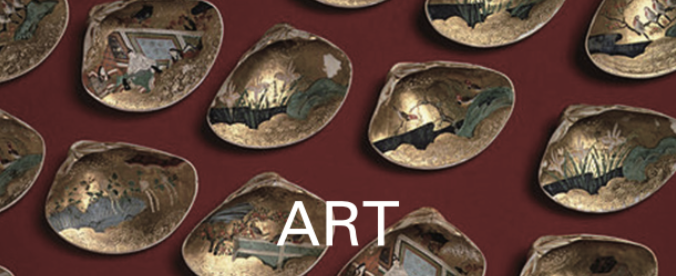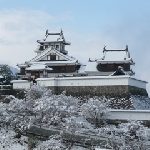
This museum introduces the history of the development and maintenance of Akechi Mitsuhide (1528 – 1582) a feudal lord and general under Oda Nobunaga (1534 – 1582), the legendary warlord and the military dictator, and raised in rebellion against Nobunaga in 1582, from the early modern times.
The Fukuchiyama basin flourished as a key point of transportation connecting the Japan Sea and Nara and Kyoto, by Yura River to make a detour as a dragon to Wakasa Bay from Mt.Mikunidake, at the Prefecture border of Kyoto, Shiga and Fukui.
In the 16th century, Mitsuhide built the castle called Garyujo Castle, lying dragon castle, in the hillock to stick out to the center of the basin, where ancient settlement sites were, and he developed a castle town.
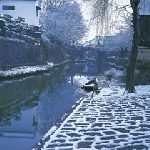
Toyotomi Hidetsugu (1568 – 1595), the Imperial Regent and the nephew of Toyotomi Hideyoshi (1537 – 1598), the powerful feudal lord and Imperial Regent who unified Japan, built the castle to relocate a part of the abandoned castle of Azuchijo Castle, and developed the castle town, in 1585.
Although the castle was abandoned in 10 years, the reed screen of Omi, Shiga, made of the lakeside reeds, and the Omi shonin, merchants of Omi Province remain and have expanded.
A peaceful boat tour in the riverside district still contains the sound of the wind swaying bunches of reeds. It is a refreshing breeze over the water surface, with the narrative of the boatman.
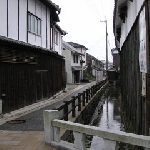
Tatsunojo Castle is a restored Honmaru Palace, the keep of a castle Palace, at the foot of the mountain. It was rebuilt by Wakisaka Yasumasa (1633 – 1694), a feudal lord, in the early Edo period. The castle town is called Little Kyoto, and the samurai residences, and merchant houses and Teramachi, Temple town, retain their old-days atmosphere.
Although Yasumasa was adopted and the 3rd lord of the Wakisaka family, he inherited the technology of building castles and developing a castle town from those family members before him. Wakisaka Yasuharu (1554 – 1626), the 1st head of Wakisaka family as a feudal lord of Tatsuno Domain, used these skills at Ozu Domain, Ehime in the Iyo Hijikawa River.
Wakisaka Yasumoto (1584 – 1654): the 2nd head of the Wakisaka family as a feudal lord of Tatsuno Domain used these at Omi Province Shiga, and at Iida Domain, Nagano in the Shinano Tenryugawa River. And Yasumasa left the beauty intelligence from appreciating the land.
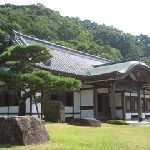
The castle on a hill in the plains of Tatsunojo Castle was rebuilt by Wakisaka Yasumasa (1633 – 1694), a feudal lord, in the early Edo period. Wakisaka was the lord of this castle in the Edo period. Now Honmaru Palace, the keep of a castle Palace was restored. The Wakisaka family was originally from Omi, Shiga Asai. The family served the Asai clan and Hashiba Hideyoshi (Toyotomi Hideyoshi (1537 – 1598), the powerful feudal lord and Imperial Regent who unified Japan, in Nagahama Shiga.
Therefore, the Wakisaka family knew well that modern castles developed with the basic layout of castle town. This castle town is called little Kyoto capital in Harima province. The elegance of the tea-ceremony room, Shuentei in the Wakisaka Family House at the Tatsuno Park, also shows the history of the Wakisaka Family.

The history of the great castles of Azuchijo Castle and Osakajo Castle had been inherited by Himeji Castle, which was the supervising base of the Western Provinces.
This museum is adjacent to the castle and exhibits the cultural value of the castle town, which was integrated with the castle.
The value of the early modern castle is based on the functionality of the castle town’s basic layout, the formation of the landscape, such as Himeyama virgin forest, and its awe-inspiring history. The castle tower symbolizes it all.
– The early modern castles in Japan were the tool to prevent War.
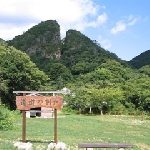
Sado Gold Mine, on the Tentative List of World Heritage Sites, had been mined for 388 years, since its discovery in 1601. The mine gallery extends 400 km, and was the largest gold and silver mine in Japan, with output of 78 tons of gold and 2,300 tons of silver. Doyunowareto, the V-shaped cracked trace of outcrops of the immense deposits remains, which was the beginning of the discovery of the Sado Gold Mine.
Doyukou, the mine gallery, has an operating rail car that is reserved as Industrial Heritage in modern and present days and is displayed.
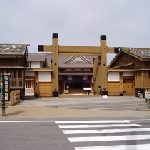
Sado Gold Mine was discovered in 1601 of the Keicho era (1596 – 1615). The abundant amount of gold production supported the Tokugawa Shogunate and created the shining culture of Keicho in Kyoto. Okubo Nagayasu (1545 – 1613), a bureaucrat of the Tokugawa Shogunate, in charge of silver and gold mines, and a feudal lord, was appointed as Sado Commissioner. He set up a Commissioner’s office in Aikawa, which was a suitable place for transporting goods and building a town.
The Goto Yakusho office was the exclusive factory of Koban, a small-sized old Japanese gold coin casting firm. It was adjacent to Sado Bugyosho. Houei Koban distributed in 1710, and Shotoku Koban distributed in 1714. They have Gokuin, a stamp on the back of the gold coins, to indicate Sado production.
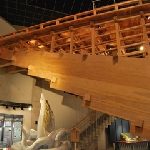
The Kurobe Gorge is a deep V-shaped gorge that rises in the upper and middle reaches of the Kurobe River, originated from Mt. Washibatake in the central part of the Northern Alps. This Gorge is listed in the top 100 unexplored regions. The trolley railroad was opened in 1937, with the development of power resources in the Gorge. Since then, it has been crowded with people who have been fascinated by the unexplored region.
In addition, the Kurobe River has a history that Maeda Tsunanori (1643 – 1724), the 4th lord of the Kaga Domain, made the Aimotobashi Bridge, which was one of the three unusual bridges in Japan. This museum exhibits part of the restored model of the Aimotobashi Bridge.
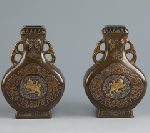
The museum systematically exhibits art and metalworks by artists deeply related to the region, as well as those who influenced local art and craftwork. Takaoka city was developed by Maeda Toshinaga (1562 – 1614), the 1st feudal lord of Kaga Domain.
Since then, the history of Takaoka culture with traditional techniques and creativity has continued. The casting developed as Takaoka copperware, and Takaoka lacquerware’s own technology has been passed down to today.

This museum is built at the site of the house of the Honda family. The Hondas were part of the Kaga Domain, a chief retainer of the Maeda family and this museum introduces a source of great culture and art of Kaga Domain.
Kanamori Sowa(1584 – 1657): a master of the tea ceremony and garden designer, who was the legitimate child of the Hida Takayama Clan and a tea master and a garden designer, introduced Nonomura Ninsei (17C) to the Kaga Domain.
Ninsei was the great potter and especially good at managing a potter’s wheel. His Kyoyaki Iroe, Kyoto style ceramic art, were earthen vessels painted with even thinness. His art was inherited by the Kaga pottery. The ultimate beauty is displayed at this museum.

Hagi ware was made with kilns of this Domain. Production started with Korai Chawan, bowls, by inviting potters of brother Ri Shyako, and Ri Kei from Korea. Hagi ware became famous as one of the highest rankings for Japanese antique tea bowls. The highest ranking is Raku Ichi (named after Raku ware). The Second highest ranking is Hagi Ni (named after Hagi ware) and the Third highest is Karatsu San (after Karatsu ware). There are still many potteries here, with a tradition more than 400 years.
Horiuchi district is located around the former Hagijo Castle, third bailey. The castle was built at the foot of Mt. Shizukiyama in 1604, after a 4 year construction period, by Mouri Terumoto (1533 – 1625), who had extended his clan’s power to nearly all of the Chugoku region. Terumoto was a feudal load, and grand son and successor of Mouri Motonari (1497 – 1571) a feudal lord in the western Chugoku region of Japan.
Horiuchi started from the layout of the castle town by Terumoto, which was organized during the Castle construction. There used to be various government offices of the Domain and the residences of high ranking samurai, including a family of the Mouri clan.
The zoning of the residences of the samurai in the castle town of the early modern times still remains. This includes the historical urban district, with Chinese citron seen over the stone walls and mud walls.
lls.
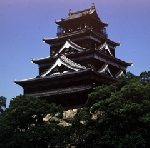
The Ota River estuary is a cove with small islands and sandbars. Due to the convenient transportation of water and land, Mouri Terumoto (1533 – 1625) a feudal load, grand son and successor of Mouri Motonari (1497 – 1571) feudal lord in the western Chugoku region of Japan, extended his clan’s power to nearly all of the Chugoku region, built Hiroshimajo Castle in 1589.
The construction of this castle was a large-scale building including stone walls, moats, and a castle tower, and a castle town was also built.
Although there were no actual battles against this castle, it was only a quirk of history that this castle became the front-line base of the Shogunate army during the Second Subjugation of Choshu, Mouri clan in 1866.
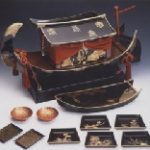
Goto Tamekiyo (1553 – 1583), who was a retainer of Yamanouchi Kazutoyo (1545/1546 – 1605), a feudal loard, first lord of Tosa Domain, drew an arrow from the face of Kazutoyo by putting his foot on Waraji, straw sandals, and stamping down on the face, in the field of battle.
His family served the chamberlain of the Tosa Domain, built their residence at the site of Akijo Castle and let their retainers live around it, in the Edo period (1603 – 1868).
That is Doikachu, the area of samurai residences, where hedge of Obame Kashi, Japanese oak, continued and the elegant appearance exists. This museum introduces the elegance of the Goto family through traditional armors, arts and crafts, too.
